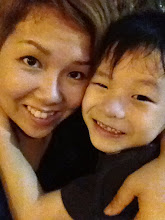On the whole, children with PDDNOS share the social and communicative disabilities found in children with Autistic Disorder. They often need services or treatments similar to those provided to children with autism.
Traditional Methods
No one therapy or method will work for all individuals with Autistic Disorder or PDDNOS. Many professionals and families will use a range of treatments simultaneously, including behavior modification, structured educational approaches, medications, speech therapy, occupational therapy, and counseling. These treatments promote more typical social and communication behavior and minimize negative behaviors (e.g., hyperactivity, meaningless, repetitive behavior, self-injury, aggressiveness) that interfere with the child's functioning and learning. There has been an increasing focus on treating preschool children with PDDNOS by working closely with family members to help the children cope with the problems encountered at home before they enter school. Many times, the earlier these children begin treatment, the better the outcome.
Addressing behavior issues. As children with PDDNOS struggle to make sense of the many things that are confusing to them, they do best in an organized environment where rules and expectations are clear and consistent. The child's environment needs to be very structured and predictable.
Many times a behavior problem indicates that the child is trying to communicate something-- confusion, frustration or fear. Think of the child's behavior problem as a message to be decoded. Try to determine the possible cause of the behavior. Has the child's routine or schedule changed recently? Has something new been introduced that may be distressing or confusing the child? When a child's communication skills improve, behavior problems often diminish-- the child now has a means of expressing what is bothering him or her, without resorting to negative behavior.
The use of positive behavioral support strategies for these children has proved effective. It is important to remember that:
- Programs should be designed on an individual basis, because children vary greatly in their disabilities and abilities. Treatment approaches that work in certain cases may not work in others.
- Children with PDDNOS have difficulty generalizing from one situation to another. The skills they have learned in school tend not to be transferred to the home or other settings. It is very important to be consistent in the treatment of a problem across all areas of the child's life-- school, community, and home. This encourages generalization of behavior changes.
- A home-community-based approach, which trains parents and special education teachers to carry out positive behavioral support strategies, can be instrumental in achieving maximum results.
Appropriate educational program.
Education is the primary tool for treating PDDNOS. Many children with PDDNOS experience the greatest difficulty in school, where demands for attention and impulse control are virtual requirements for success. Behavioral difficulties can prevent some children from adapting to the classroom. However, with appropriate educational help, a child with can succeed in school.
The most essential ingredient of a quality educational program is a knowledgeable teacher. Other elements of a quality educational program include:
- structured, consistent, predictable classes with schedules and assignments posted and clearly explained;
- information presented visually as well as verbally;
- opportunities to interact with non disabled peers who model appropriate language, social, and behavioral skills;
- a focus on improving a child's communications skills using tools such as communication devices;
- reduced class size and an appropriate seating arrangement to help the child with PDDNOS avoid distraction;
- modified curriculum based on the particular child's strengths and weaknesses;
- using a combination of positive behavioral supports and other educational interventions; and
- frequent and adequate communication among teachers, parents, and the primary care clinician.
Medical treatment.
The primary aim of medical treatment of children with PDDNOS is to ensure physical and psychological health. A good preventive health care program should include regular physical checkups to monitor growth, vision, hearing, and blood pressure; immunization according to schedule; regular visits to the dentist; and attention to diet and hygiene. An effective medical treatment begins with a thorough medical assessment. The pre treatment assessment is essential for detecting existing medical conditions, such as a seizure disorder.
There is no one specific medication that helps all children with PDDNOS. Some medications have been found to be helpful, but for many children with autism or PDDNOS, medication levels need to be experimented with until the optimal combination and dosage are found. Since this differs with each child, there is no set medical treatment for children with PDDNOS but, rather, an individual medication regimen for each. Because of these complexities, in the eyes of many, medication therapy is viewed as a treatment to be used only when other types of treatment have been unsuccessful. It is important to note that medication can be effective and necessary for conditions that may coexist in children with PDDNOS, such as attention deficit disorder or obsessive compulsive disorder.
Parents' final decision on whether to use medication as part of their child's therapy is a personal one and should be respected and supported. Medication should always be uit. Let conjunction with other therapies, and its effects should be monitored through feedback from the child, parents, and teachers.
Psychological treatment.
Counseling may be helpful to families to help them adjust to raising a child with a disability. If the child is already attending a school program, both parents and teachers need to be told of the symptoms of PDDNOS and how those symptoms may affect the child's ability to function at home, in the neighborhood, in school, and in social situations. Psychologists can also provide ongoing assessments, school consultation, case management, and behavior training. Some children also benefit from counseling from an experienced practitioner who knows about PDDNOS. Family teamwork can ease the burden on the primary home care giver, who needs a support system.

0 comments:
发表评论